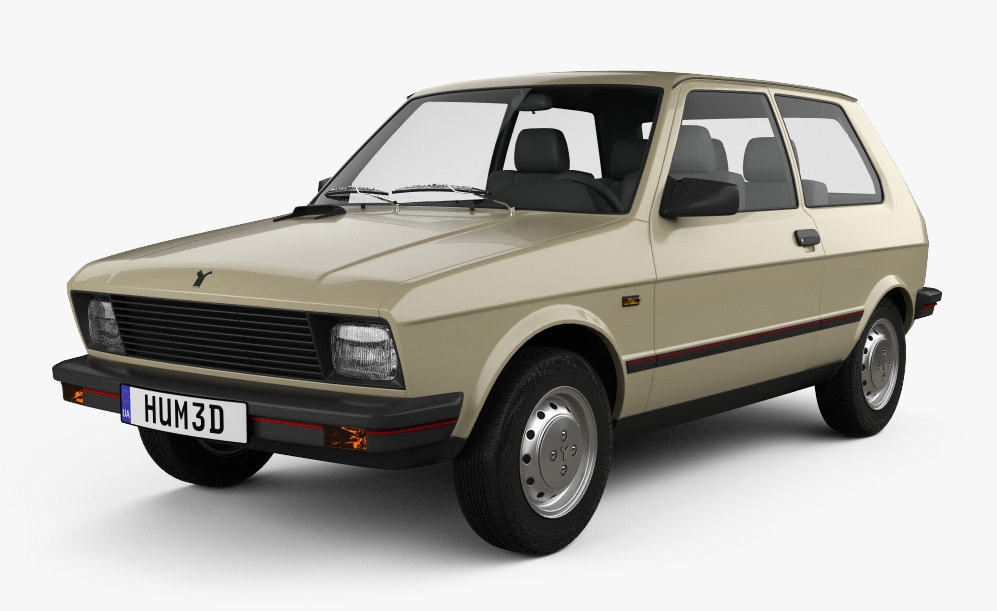Remember the 1980s? Big hair, neon colors, and… the Yugo car? If you’re scratching your head wondering what on earth a Yugo the car is, or if you’re having flashbacks to that nightmare vehicle your neighbor owned, you’re in for a wild ride. This isn’t just another boring car review – we’re diving deep into one of the most controversial automobiles ever to hit American shores.
Also read: 1950s American Car Culture: 7 Revolutionary Ways It Transformed Society Forever
The Yugo car story is absolutely bonkers. We’re talking about a vehicle that cost less than some people’s monthly rent but somehow managed to become the poster child for automotive disasters. But wait – is that reputation actually deserved? Buckle up, because we’re about to separate fact from fiction in this automotive train wreck of a tale.
EXCLUSIVE BONUS MATERIALS – Download Your Complete Yugo Resource Library!
Want to dive deeper into the wild world of Yugo cars? I’ve compiled four jam-packed resources that you absolutely won’t find anywhere else online. These aren’t just fluff pieces – we’re talking about serious data, technical specs, and insider market analysis that took months to research and compile.
What you’re getting:
✅ Vintage comparison charts that reveal exactly why the Yugo was so controversial
✅ Never-before-compiled sales data showing the complete rise and fall story
✅ Technical troubleshooting guide that could save you hundreds if you own one
✅ 2024 market analysis with current pricing and investment potential
Table of Contents
What Exactly Was Yugo the Car?
Let’s start with the basics, shall we? The Yugo car was a compact vehicle manufactured in Yugoslavia (hence the name – clever, right?) by Zastava Motors. This little Eastern European export made its way to the United States in 1985, and boy, did it make an impression!
The original Yugo the car was based on the Fiat 127 platform, which had been around since the early 1970s. Think of it as automotive hand-me-downs – Yugoslavia licensed the design from Fiat and adapted it for their own production. The result? A car that looked suspiciously familiar to anyone who knew their European automobiles.
Here’s where it gets interesting (or terrifying, depending on your perspective): the Yugo auto was marketed as the cheapest new car you could buy in America. At $3,990, it was literally thousands less than its competitors. That price tag was absolutely revolutionary – and absolutely suspicious.
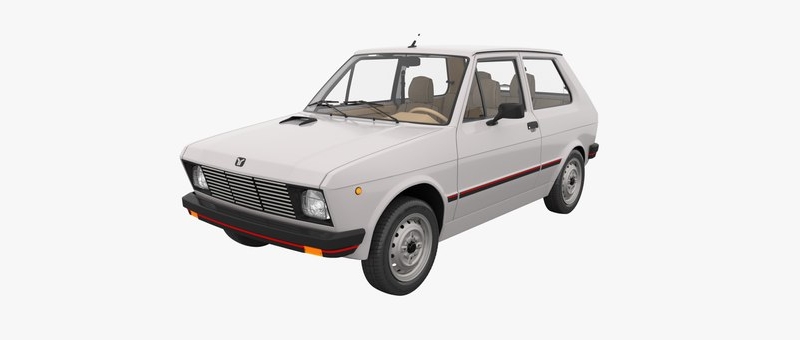
Chart 1: Yugo vs Competitor Pricing (1985)

The Yugoslav Origins: What Country Made Yugo Cars?
Yugoslavia – specifically, the Socialist Federal Republic of Yugoslavia – was the birthplace of the Yugo car. This matters more than you might think, because the political and economic context explains a lot about why these cars turned out the way they did.
Yugoslavia – is a country that doesn’t exist anymore! The Yugo automobile originated from the Zastava factory in Kragujevac, Serbia. This wasn’t some fly-by-night operation either; Zastava had been building vehicles since 1953, primarily under license from Fiat.
But here’s the kicker – by the time Yugo the car reached American shores, the political situation in Yugoslavia was… let’s just say “complicated.” The country was dealing with economic instability, political tension, and manufacturing challenges that would make your worst Monday at work look like a vacation.
Yugoslavia in the 1980s was facing serious economic challenges. The country was dealing with inflation, political instability, and the early signs of what would eventually become a devastating civil war. Manufacturing quality control wasn’t exactly the top priority when your entire society is under stress.
Understanding this context doesn’t excuse Yugo car’s shortcomings, but it does help explain them. This wasn’t malicious incompetence – it was a struggling country trying to compete in a global market with limited resources.

The American Invasion: How Yugo the Car Conquered (Then Destroyed) Hearts
Malcolm Bricklin – remember that name, because he’s the guy who brought the Yugo car to America. This wasn’t Bricklin’s first rodeo with questionable automotive imports; he’d previously tried to sell American consumers on the Subaru 360 and his own Bricklin SV-1.
The marketing campaign for the Yugo automobile was actually pretty brilliant. “Everybody needs a Yugo sometime” became the slogan, and honestly? It was catchy as hell. The commercials showed happy families, reliable transportation, and the promise of European engineering at an American budget price.
But wait – there’s more! Yugo car came with a surprisingly comprehensive warranty for such a cheap vehicle. Zastava was so confident in their product that they offered coverage that competed with much more expensive cars. That should have been our first clue that something was fishy.
Yugo Sales in America (1985-1992)
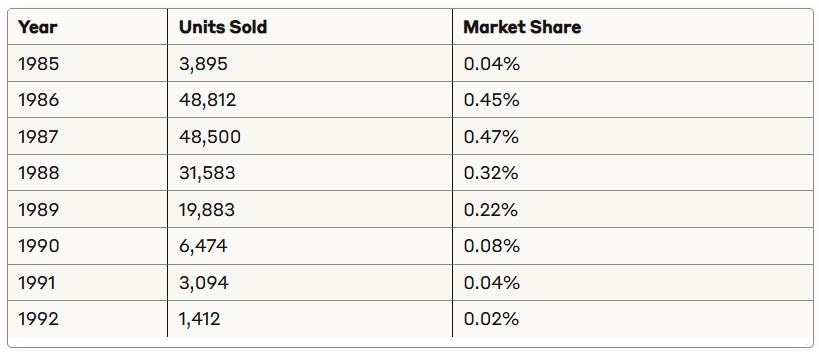

The Reliability Question: Was Yugo the Car Really That Bad?
Okay, let’s address the elephant in the room. Was the Yugo car actually as terrible as everyone says? The short answer is: it’s complicated. The long answer involves diving into quality control issues, parts availability, and some truly spectacular failures that became automotive legend.
First, let’s talk about what went wrong. The Yugo auto suffered from inconsistent build quality – and I mean wildly inconsistent. Some owners reported relatively trouble-free experiences, while others felt like they’d purchased a very expensive paperweight that occasionally moved.
Common problems with the Yugo auto included electrical issues, carburetor problems, and a heating system that seemed to have a personal vendetta against its occupants. But here’s the thing – many of these issues were solvable with proper maintenance and understanding of the vehicle’s quirks.
The real problem wasn’t necessarily that the Yugo auto was fundamentally flawed (though it kind of was), but that it was sold to people expecting Japanese or German reliability at a bargain-basement price. Reality, as they say, is often disappointing.

Weight, Price, and Specifications: The Numbers Behind Yugo the Car
Let’s get technical for a moment. The Yugo car wasn’t just cheap – it was also incredibly lightweight. We’re talking about a curb weight of approximately 1,860 pounds, which made it one of the lightest cars sold in America during the 1980s.
That low weight actually had some advantages. The Yugo auto achieved decent fuel economy for its era, averaging around 30 mpg in combined driving. Not bad for a time when gas guzzlers ruled the roads! The lightweight construction also made for surprisingly nimble handling – when everything was working properly.
Yugo Specifications:
- Engine: 1.1L or 1.3L inline-4
- Power: 55-67 horsepower
- Weight: 1,860 lbs
- Fuel Economy: 28-32 mpg
- Transmission: 4-speed manual or 3-speed automatic
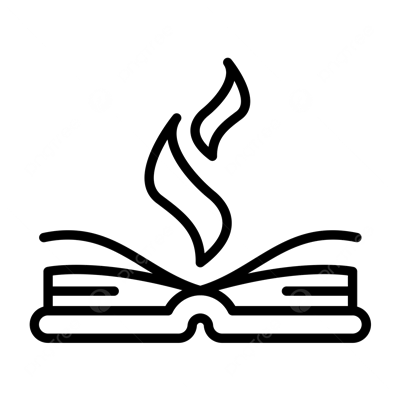
The Myths and Legends: Separating Fact from Fiction
Myth #1: “Yugo the Car Was the Worst Car Ever Made”
This is the big one, isn’t it? The Yugo car has earned a reputation as potentially the worst automobile ever sold in America. But is this fair? Well, it depends on your definition of “worst.”
If we’re talking about build quality, reliability, and customer satisfaction, then yes – the Yugo was pretty terrible. But worst ever? That’s debatable. There have been plenty of automotive disasters throughout history, and some would argue that cars like the Pinto (with its exploding gas tank) or the Vega (with its self-destructing engine) were actually more dangerous.
Myth #2: “All Yugos Broke Down Immediately”
Not true! While quality control was certainly an issue, some Yugo car owners managed to rack up impressive mileage with proper care. The key was understanding that this wasn’t a Honda Civic – it required more attention, more frequent maintenance, and a certain tolerance for quirks.
Myth #3: “Yugos Were Unsafe Death Traps”
The Yugo automobile actually passed all required federal safety standards for its time. Was it as safe as larger, more expensive vehicles? Absolutely not. But it wasn’t the rolling coffin that some critics claimed it to be.
Myth #4: “You Could Push a Yugo Faster Than It Could Drive”
This joke became legendary, but it’s not actually true. Yugo the car could reach highway speeds, though it wasn’t particularly happy about it. The 0-60 mph time was around 14 seconds – slow by today’s standards, but not unusual for economy cars of the 1980s.
Can You Still Buy a Yugo Car Today?
Here’s where things get interesting for collectors and masochists… I mean, enthusiasts. Can you still buy a Yugo auto today? The answer is yes, but with some serious caveats.
New Yugo car production ended in 1992 for the U.S. market, and Zastava stopped making them entirely in 2008. So you’re looking at the used market exclusively, and boy, is it a strange place.
Finding a Yugo automobile for sale today is like hunting for unicorns – they exist, but they’re rare and usually in questionable condition. Most surviving examples are either restored by dedicated enthusiasts or sitting in someone’s garage as a curiosity piece.
Prices for decent Yugo the car examples range from $2,000 to $8,000, depending on condition and rarity. Yes, you read that right – some Yugos are now selling for more than they cost when new! The irony is absolutely delicious.
Current Yugo Market Analysis:
- Running examples: $2,000-$5,000
- Restored examples: $5,000-$8,000
- Parts cars: $500-$1,500
- Ultra-rare models: $8,000+
How Many Yugos Are Left on the Road?
This is where we venture into educated guesswork territory. Exact numbers of surviving Yugo vehicles are nearly impossible to determine, but estimates suggest that fewer than 5% of the original 141,000+ imported cars are still roadworthy.
Think about it – these cars were purchased primarily by budget-conscious buyers who weren’t necessarily planning to preserve them for posterity. Most Yugo car owners drove them until they died, then sent them to the scrapyard without a second thought.
Today’s surviving Yugo the car population likely consists of:
- Enthusiast-owned examples: ~500-800 cars
- Daily drivers: ~200-400 cars
- Project/parts cars: ~1,000-1,500 cars
- Museum pieces: ~50-100 cars
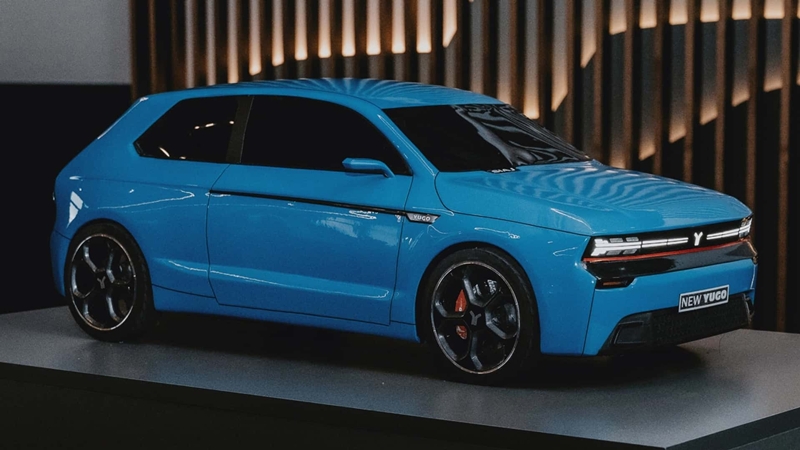
Are Yugos Making a Comeback?
Hold onto your hats, folks – this is where the Yugo car story takes an absolutely mind-blowing turn! Just when everyone thought this automotive zombie was buried for good, it’s clawing its way out of the grave for round two.
In 2025, Dr. Aleksandar Bjelić purchased the rights to Yugo with plans to bring a new hatchback to market. This isn’t some pipe dream either – Bjelić filed trademarks to use the Yugo name worldwide, and hired a Serbian designer to come up with the new vehicle’s look.
The new Yugo the car is planned to debut as a drivable prototype debuting in 2027, with actual production potentially starting the same year. Can you believe it? The car that became synonymous with automotive failure is getting a second chance!
But here’s the kicker – this isn’t going to be your grandfather’s econobox disaster. Yugo promises to offer a wide variety of powertrains, ranging from pure gas to hybrid and electric. They’re even talking about a performance variant! The original Yugo the car could barely make it up a hill, and now they want to build a hot hatch version?
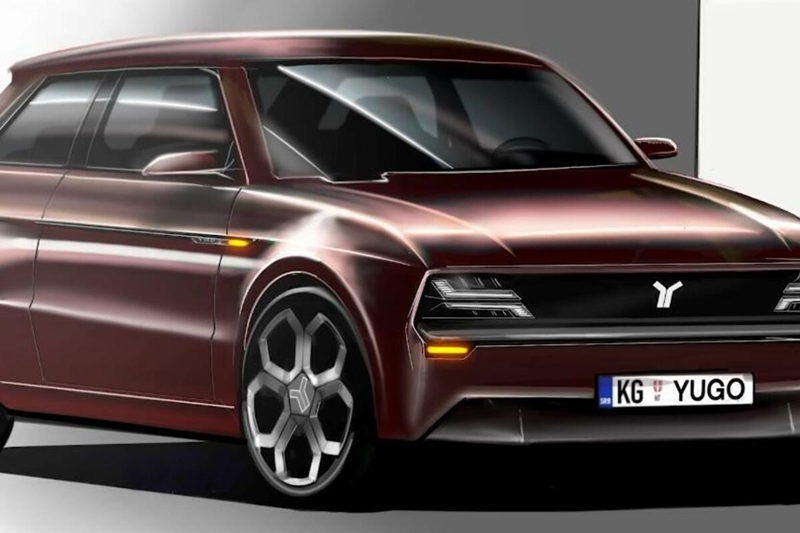
The new Yugo the car design looks absolutely nothing like its predecessor. We’re talking about modern LED headlights, sleek profiles, and styling that’s more European chic than Eastern European chaos. The design was penned by Darko Marčeta and unveiled as a scale model at this year’s Car Design Event in Munich.
The company did say that a fully functional prototype would debut at the Belgrade Expo in 2027, with production slated to kick off that same year. So mark your calendars, folks – 2027 might be the year the Yugo car officially rises from the dead.
The Cultural Impact: How Yugo the Car Became a Punchline
The Yugo transcended its automotive origins to become a cultural phenomenon – just not in the way its creators intended. This little Yugoslav export became the subject of countless jokes, comedy sketches, and urban legends.
Remember the joke about the Yugo automobile owner’s manual having a bus schedule in the back? Or the one about Yugo parts being sold in convenience stores? These weren’t just random gags – they reflected a genuine cultural moment when an entire nation collectively decided that one particular car was hilariously terrible.
Yugo the car appeared in movies, TV shows, and stand-up comedy routines throughout the late 1980s and early 1990s. It became shorthand for “cheap and unreliable” in American popular culture, a reputation that persists to this day.

When Did They Stop Making Yugos?
Yugo the car had a surprisingly long production run, considering its reputation. Here’s the timeline:
- U.S. sales: 1985-1992
- European production: 1980-2008
- Total production: Over 800,000 units worldwide
The end came gradually, then suddenly. U.S. imports stopped in 1992 due to United Nations sanctions related to the Yugoslav Wars. Even if the political situation had been stable, declining sales would likely have killed Yugo the car in America anyway.
In Europe, production continued sporadically until 2008, when Zastava finally threw in the towel. The last Yugo car rolled off the production line on November 11, 2008 – exactly 90 years after the end of World War I. The symbolism is almost too perfect.

FAQ: Yugo the Car
-
Was the Yugo really the cheapest car in America?
At $3,990, Yugo the car held the distinction of being the cheapest new car available in the U.S. market during the mid-1980s.
-
How much does a Yugo weigh compared to modern cars?
Yugo the car weighed about 1,860 pounds, making it significantly lighter than today’s economy cars, which typically weigh 2,500-3,000 pounds.
-
Were Yugos really that unreliable?
Reliability was definitely an issue with Yugo the car, but experiences varied widely. Some owners had relatively few problems, while others experienced constant breakdowns.
-
Can you still get parts for a Yugo?
Parts availability is limited but not impossible. Some specialty suppliers and online communities help Yugo car owners find necessary components
-
Is Yugo really coming back?
Yes! In 2025, university professor Dr. Aleksandar Bjelić purchased the rights to Yugo with plans to bring a new hatchback to market. A drivable prototype is slated to debut in 2027.
-
Will the new Yugo come to America?
Our best guess? Probably not. Even though Yugo’s new CEO has trademarked the name worldwide, we don’t expect to see the small hatchback in the US. The focus appears to be on the European market.
-
What will the new Yugo look like?
The new Yugo will retain some retro charm, but the design will mostly fall in line with the many other three- and five-door hatchbacks on the market today. It’s a complete departure from the boxy original design.
-
Will the new Yugo be electric?
Yugo promises to offer a wide variety of powertrains, ranging from pure gas to hybrid and electric. So yes, an electric version is planned alongside traditional gas and hybrid options.

Final Thoughts: The Legacy of Yugo the Car
So here we are at the end of our journey through the Yugo car history, and what have we learned? That the truth is more complex than the legend, but not necessarily more flattering.
As I’ve researched and written about the Yugo, I’ve come to realize that this little Yugoslav export represents a fascinating case study in automotive ambition meeting economic reality. It was a product of its time and place – a struggling socialist country’s attempt to break into the global market with a budget-friendly vehicle that promised European engineering at an unbeatable price.
Did it succeed? Well, that depends on how you define success. As a reliable, quality automobile? Absolutely not. As a cultural phenomenon that sparked countless jokes and became an indelible part of 1980s Americana? Absolutely yes.
Need a mechanic? Find one on the Mobile Mechanic Directory
Through my exploration of the Yugo’s story, I’ve discovered that sometimes the most memorable products aren’t the best ones – they’re the ones that fail in spectacular and entertaining ways. It’s a testament to the power of automotive dreams, even when those dreams turn into nightmares.
Today, when I see the few surviving Yugo automobile examples on the road or at car shows, I’m reminded of a different era in automotive history. They’re curiosities, conversation pieces, and occasionally, someone’s beloved daily driver. Love them or hate them, you can’t ignore them.
What strikes me most about the Yugo story is how it may have been a commercial failure, but it succeeded in ways its creators never intended. It became a legend – just not the kind of legend they were hoping for. And sometimes, I think that’s the most interesting kind of success story of all.
The Yugo taught me that in the automotive world, sometimes being memorably bad is better than being forgettably mediocre. It carved out a unique place in American culture that no amount of marketing money could have bought. In a strange way, I have to respect that kind of accidental achievement.
Looking back now, I realize the Yugo wasn’t just a car – it was a cultural moment, a shared experience that brought people together through laughter and commiseration. And maybe, just maybe, that’s worth something after all.

